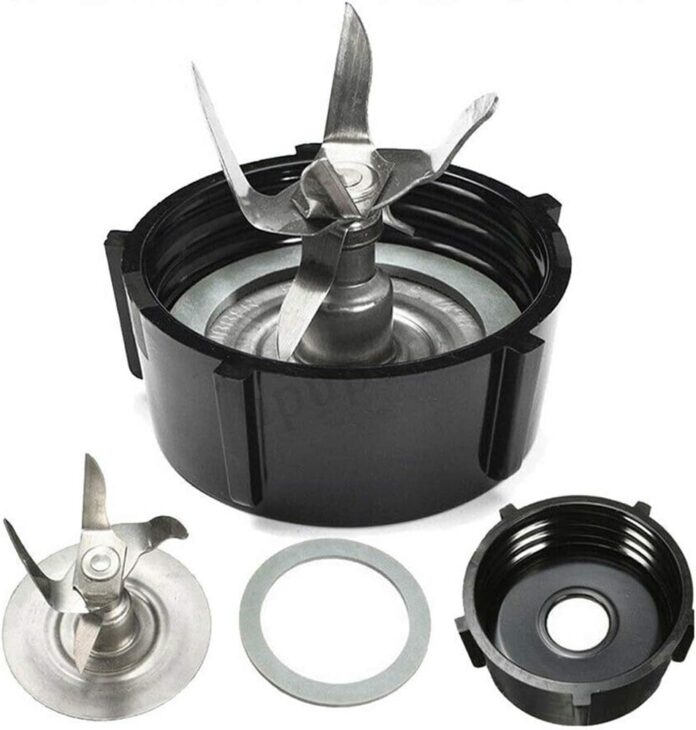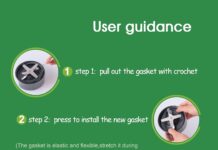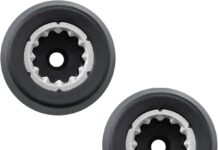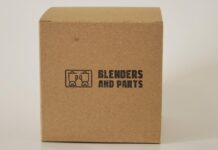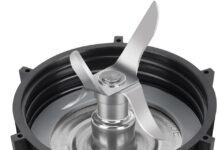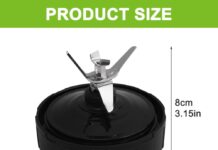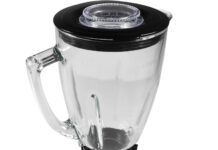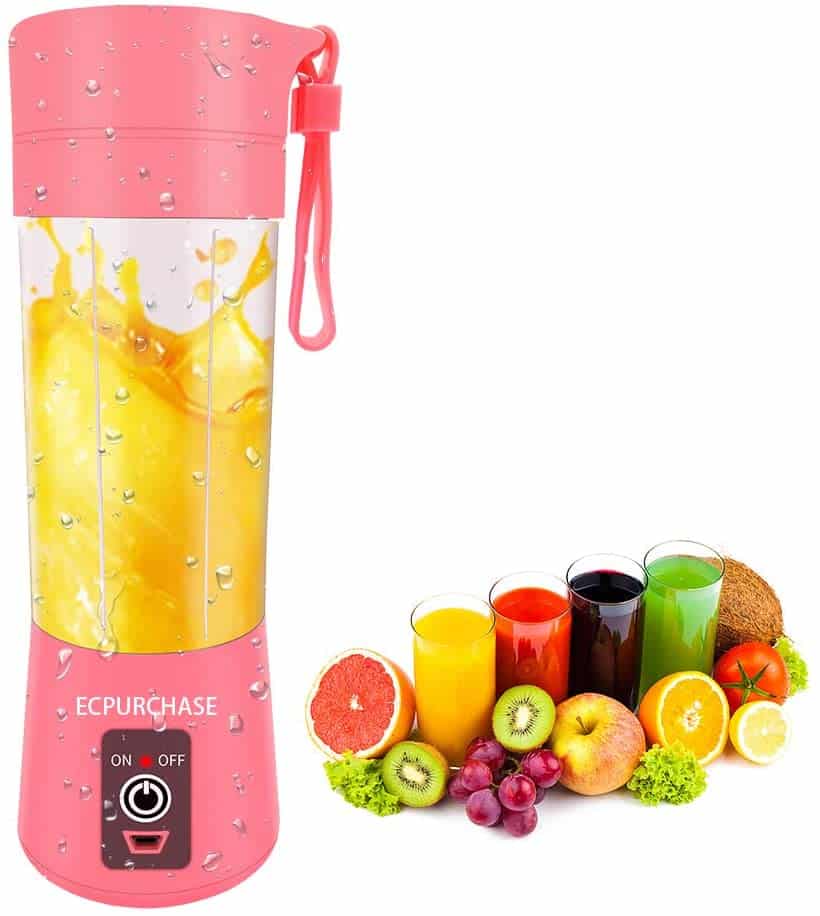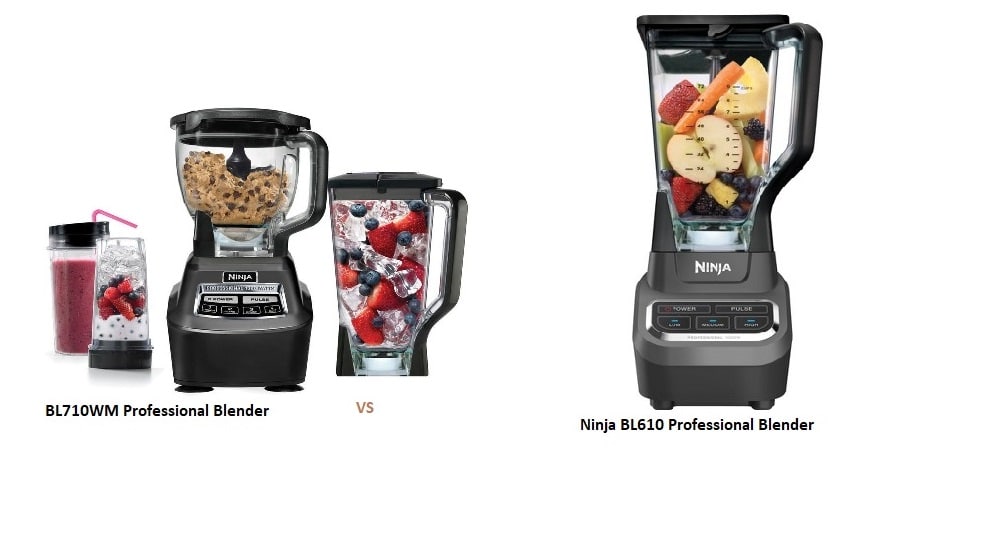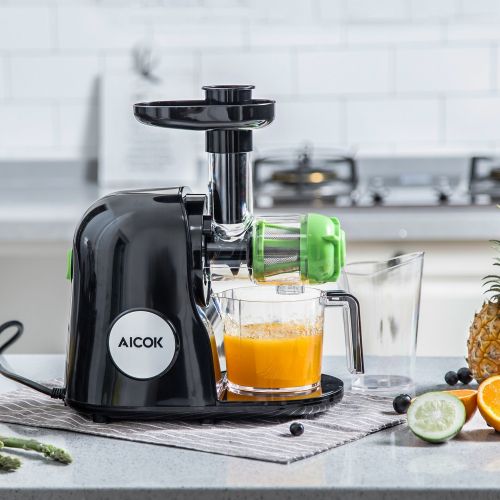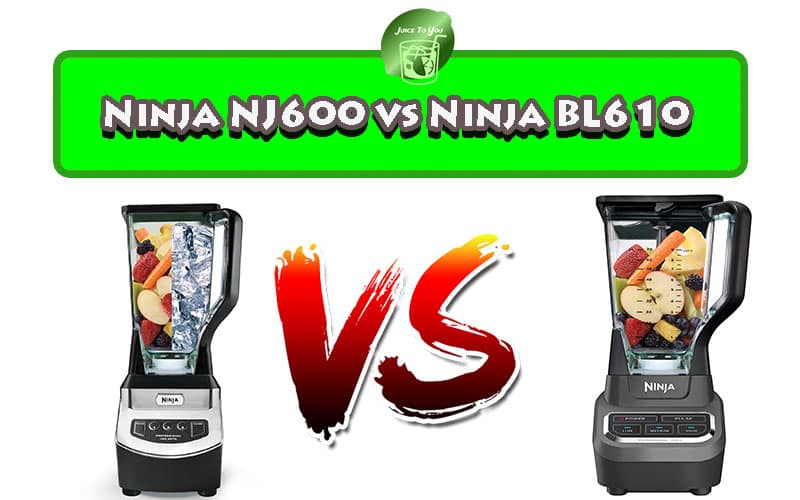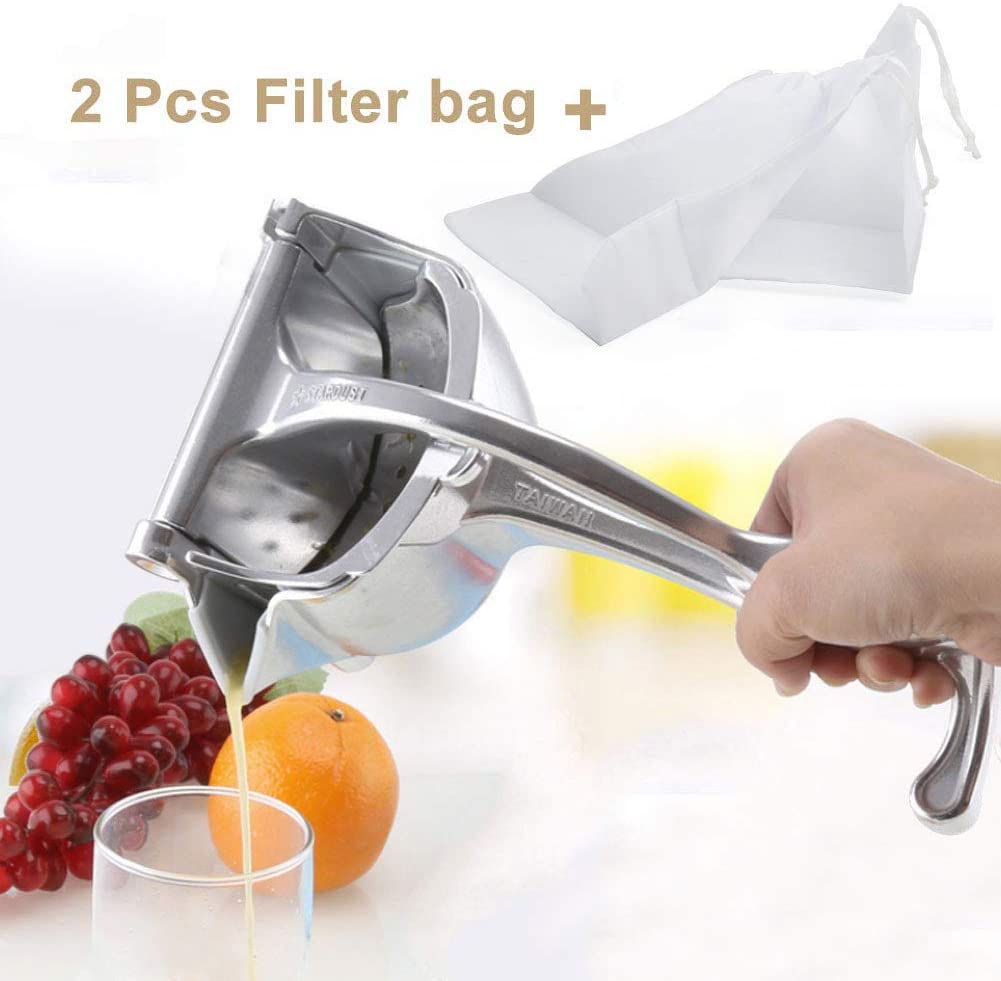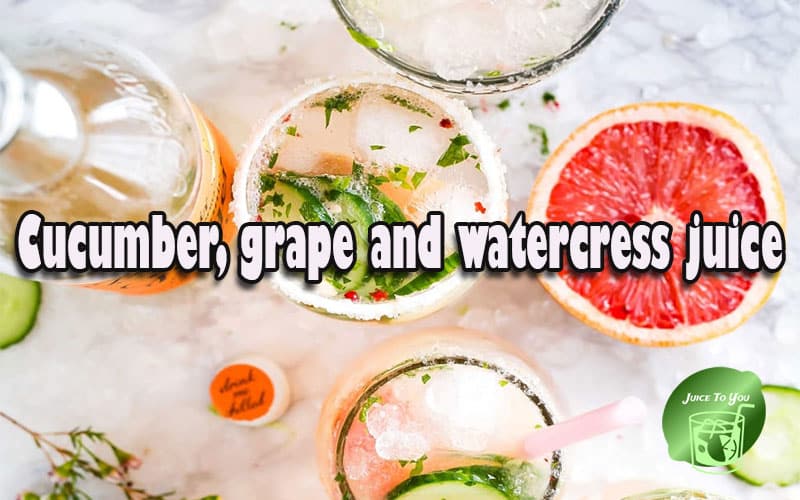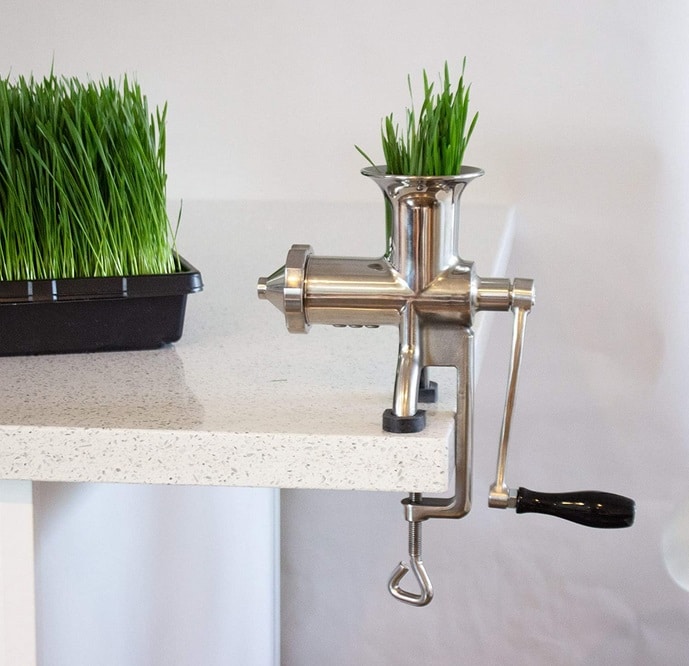Are we looking for a dependable replacement kit that gets our Oster blender back to work without breaking the bank?
Our summary of the Blender Blade for Oster Osterizer with Rubber Seal Gasket & 4902 Blender Jar Bottom & 6 Point Fusion Blade 4980 replacement parts by SixElements
We think this replacement kit is aimed squarely at people who want to salvage a working Oster jar or avoid buying an entirely new blender. It bundles the essential wear parts — the 6-point blade, the blender jar base, and a rubber seal gasket — into one affordable package so we can get blending fast.
Why this kit matters to us
We value parts that are straightforward to swap, durable enough for everyday tasks, and compatible with common Oster models. This kit targets those points and offers a faster, cheaper route back to smoothies, sauces, and crushed ice.
Blender Blade for Oster Osterizer with Rubber Seal Gasket & 4902 Blender Jar Bottom & 6 Point Fusion Blade 4980 replacement parts by SixElements
What’s included in the package
We like knowing exactly what we’ll receive before buying, and this kit lists the components clearly: one 6-point blade, one blender jar base, and one seal gasket. That combination covers the typical failure points for many Oster jars — the blade assembly and the wear-prone gasket that causes leaks.
Package details to keep in mind
The blade is described as sharp enough to crush ice and fully blend products, the base is made from hard plastic gear to keep everything secure, and the gasket is rubber to maintain a water-tight seal. We should note that quality varies between vendors, so checking reviews and photos is helpful before ordering.
Specifications table
We’ve put the core specifications into an easy-to-scan table so we can compare features at a glance.
| Feature | Detail |
|---|---|
| Package contents | One 6-point blade, one blender jar base, one rubber seal gasket |
| Blade type | 6-point fusion blade (replacement part 4980) |
| Compatible jar bottom | 4902 replacement jar bottom |
| Fit models / part numbers | 083818-002-089, 124461-000-000, 131062-000-000, 084036-000-000 |
| Not compatible with | Oster Pro 1200, Oster Versa |
| Blade material | Steel |
| Gasket material | Rubber |
| Base material | Hard plastic gear |
| Typical use cases | Smoothies, crushed ice, purees, sauces |
| Package purpose | Repair/replacement to avoid buying new jar/blender |
How to read this table
We find this table useful for quickly confirming fit before buying, and to understand the materials used for wear expectations. If our current jar has a different part number, we should verify compatibility with the seller or manufacturer.
Compatibility and fit
Being sure a replacement part fits is the most crucial step. This kit explicitly lists compatible part numbers, and it also clearly states that it does not fit the Oster Pro 1200 or Oster Versa models.
How we check compatibility
We recommend checking the underside of our existing blender jar for part numbers or comparing the old blade assembly visually with product photos. If the part numbers match one of 083818-002-089, 124461-000-000, 131062-000-000, or 084036-000-000, this kit should fit.
Build quality and materials
We appreciate components that use durable materials in the right places. The blade is steel for cutting performance, the gasket is rubber for sealing, and the base uses hard plastic to interface with the blender’s drive.
What the materials mean in practice
Steel blades are standard and hold an edge long enough for normal household use, while rubber gaskets compress to maintain a seal but will eventually require replacement. The hard plastic gear is intended to engage the blender’s drive reliably, but plastic gears can wear faster than metal ones if exposed to heavy torque over time.
Performance: how well it blends
We’ve assessed how such replacement kits typically perform across common tasks: smoothies, ice crushing, soups, and sauces. A sharp 6-point blade is versatile enough for most household blending jobs, including handling ice when used with short bursts and sufficient liquid.
Practical performance notes
We should expect good performance for daily uses like fruit smoothies, milkshakes, and blended sauces. For heavy-duty tasks like making nut butter or processing large amounts of ice regularly, the blade and plastic gear will be under more strain and might show wear sooner.
Installation: step-by-step guide
Installing replacement blades and gaskets is usually straightforward but requires attention to safety. We’ll outline the steps we use to swap components safely and securely.
Step 1: Safety first
Unplug the blender and ensure the jar is empty and clean. We never attempt to install blades when the base motor is connected or powered.
Step 2: Remove the old assembly
We tip the jar upside down, hold the blade assembly, and unscrew the jar base. If it’s seized, a rubber glove or jar opener can help provide grip. We remove the old gasket and blade carefully, watching for sharp edges.
Step 3: Inspect and fit new parts
We place the new gasket around the blade hub, align the blade assembly with the threads of the jar base, and tighten securely by hand. We avoid over-tightening which can crack plastic; a snug, even fit is enough.
Step 4: Test for leaks and fit
We fill the jar with a small amount of water, secure the base, and run the blender on a short pulse to check for leaks and confirm the blade engages smoothly. Any wobble or leak indicates we should re-seat the gasket or check for cross-threading.
Use cases and real-world applications
We often use replacement kits to extend the life of our favorite jars, especially when the motor base still works fine. These parts help us keep using one jar for everyday tasks rather than buying multiple new jars or a whole new blender.
Everyday tasks where this shines
Making smoothies, crushing a few ice cubes for cocktails, pureeing soups, and preparing salad dressings are ideal for this kit. It’s great for general household use rather than heavy commercial tasks.
Durability and lifespan expectations
How long the parts last depends on how heavily we use them and how we maintain them. Regular household use with occasional ice crushing should keep the blade and gasket functional for many months to a few years.
Signs it’s time to replace components again
We look for leaks, a noticeable loss of suction or blending efficiency, rust or pitting on the blade, and visible wear on the plastic gear. If we hear grinding, see wobbling, or the jar no longer locks properly, replacement is due.
Cleaning and maintenance
Proper cleaning and care significantly extend the life of replacement parts. We recommend immediate rinsing after use and periodic thorough cleaning to prevent food buildup around the blade and gasket.
Washing tips and do’s/don’ts
We usually hand-wash the blade assembly and gasket to reduce long-term exposure to high dishwasher heat which can warp plastic and degrade rubber. If the manufacturer or seller indicates dishwasher-safe, top-rack only is the safest choice. Always dry components completely to reduce corrosion risk.
Troubleshooting common problems
Even with correct installation, issues can crop up. We’ll outline common problems and practical fixes we’ve used to resolve them quickly.
Problem: Leaking from the base
If our jar leaks after replacement, we check gasket placement for proper seating and the threads for cross-threading. Cleaning the contact surfaces and re-tightening by hand usually solves this; if not, a slightly thicker or new gasket may be required.
Problem: Wobble or uneven spinning
A wobble often indicates the blade assembly isn’t seated squarely or the blade has bent. We re-seat the assembly and inspect the blade for damage; replacement is necessary if the blade is bent.
Problem: Blade not engaging the motor
If the jar won’t engage the motor, the plastic gear on the base might be stripped or mismatched. Confirm compatibility with the listed part numbers, and if it’s a mismatch, return the kit for the correct version.
Comparing to OEM and other aftermarket parts
We like to compare cost, fit, and expected longevity when choosing replacement parts. OEM parts typically match the original fit and finish, while aftermarket parts like this SixElements kit may be more affordable but vary in quality.
What we get with OEM parts vs. this kit
OEM blades and bases tend to have closer tolerances and sometimes stronger materials, but they cost more. This kit offers a cost-effective choice for everyday household needs and is often perfectly adequate for users who want function over factory perfection.
Price and value proposition
Value for money is central to our buying decisions. This kit’s main selling point is that it saves money by allowing us to keep the original jar rather than buying a new Osterizer blender or a new jar at full OEM price.
Is this kit worth the price?
For most users, yes — particularly if the jar has no cracks and the motor base works well. The savings can be significant compared to purchasing a whole replacement blender or a factory-branded jar assembly.
Pros and cons
We find listing pros and cons helps make an informed purchase. Below we summarize the main advantages and drawbacks based on typical usage.
Pros
- Affordable way to extend the life of our Oster jar and blender.
- Includes all three critical parts: blade, base, gasket.
- 6-point steel blade handles ice and typical blending jobs.
- Clear fitment listing with common Oster part numbers.
- Easy to install for most users.
Cons
- Plastic gear may wear faster than metal options under heavy use.
- Not compatible with Oster Pro 1200 or Oster Versa — must check model carefully.
- Aftermarket parts can show variability in fit/finish between batches or sellers.
- Rubber gasket will need periodic replacement over time.
Who should buy this kit
We recommend this kit for anyone with a compatible Oster jar who wants a budget-friendly repair option. It’s especially useful for households that use their blender regularly but not for commercial operations.
Ideal user profiles
- People with older Osterizer blenders who want to avoid full replacement.
- Students, small households, and budget-conscious shoppers.
- Users who perform standard tasks like smoothies, sauces, and occasional ice crushing.
Installation tips and best practices
We want our repairs to last, so a few tips help ensure proper installation and longevity.
Best practices we follow
- Always match part numbers and visually confirm compatibility before buying.
- Hand-tighten the base rather than using tools that can over-stress plastic.
- Test for leaks with water before using food.
- Keep spare gaskets on hand since they’re often the next part to wear.
Safety considerations
Replacing blender blades involves sharp edges and potential injury risk, so we take a few precautions. Always handle blades carefully and avoid placing fingers near the blade edge; use gloves if necessary for grip and protection.
Electrical and mechanical safety
Never plug in the blender during installation. Confirm the motor base is off and unplugged before attempting any replacement steps. After installation, watch for abnormal noises or excessive heat during operation and stop use if anything seems off.
Real-world testing scenarios
We like to simulate typical user tasks to see how parts hold up. Below are a few test scenarios we recommend if you want to assess the kit after installation at home.
Test 1: Smoothie mix
Blend a combination of fruits, yogurt, and a small amount of ice for 30–45 seconds. We check blend smoothness and listen for unusual noise.
Test 2: Ice crushing
Use short bursts with enough liquid to protect the blade. This tests blade sharpness and base engagement; we avoid prolonged ice-only runs to minimize strain.
Test 3: Thick mixtures
Make a thick nut-based smoothie or dressing to watch for gear slippage or motor strain. This helps reveal plastic gear durability in higher-torque situations.
Replacement frequency and spare parts
How often we’ll need another replacement depends on use. For moderate home use, blades and gaskets may last a year or more; high-frequency or heavy tasks shorten lifespan.
Keeping spare gaskets and blades
We recommend keeping at least one spare gasket on hand; it’s the cheapest and most commonly replaced component. If we rely heavily on our blender, keeping a full spare kit ensures minimal downtime.
Buying tips and what to check in the listing
Before we click “buy,” a few checks save time and hassle. Confirm the exact part numbers, read recent reviews and photos, note the seller’s return policy, and verify shipping times.
Red flags to avoid
- Vague compatibility claims without part numbers.
- Poor or no photos of the actual parts.
- No return policy or extremely limited seller feedback.
- Reviews that consistently complain about missing pieces or obvious quality issues.
Troubleshooting advanced issues
If basic checks don’t solve an issue, a deeper look can help. We outline advanced troubleshooting steps for persistent problems.
Advanced check: Gear alignment
If the jar doesn’t engage properly, compare the gear teeth profile with the motor base interface. Any difference can indicate a mismatched part or manufacturing defect.
Advanced check: Blade wear inspection
Remove the blade and inspect under good light for pitting, bending, or loss of edge. Minor dulling can be normal; major damage requires replacement.
Frequently Asked Questions (FAQs)
We answer the questions we most often see when people consider aftermarket replacement kits.
Will this kit fit my Oster jar?
If your jar lists one of the part numbers 083818-002-089, 124461-000-000, 131062-000-000, or 084036-000-000, this kit should fit. It will not fit Oster Pro 1200 or Oster Versa models.
Can the blade crush ice?
Yes, the 6-point steel blade is sharp enough for occasional ice crushing, though we recommend short bursts and enough liquid to avoid excessive wear.
Is the gasket dishwasher safe?
We advise hand washing to prolong the rubber gasket’s life, though some gaskets may tolerate top-rack dishwasher cycles. Check the seller’s guidance if available.
How long will these parts last?
Expect months to a few years depending on use. Heavy or commercial use will shorten lifespan compared to light household use.
What if the parts don’t fit?
Check the listed part numbers and return the kit if incompatible. Choose sellers with clear return policies and good feedback to minimize risk.
Final verdict
We find the Blender Blade for Oster Osterizer with Rubber Seal Gasket & 4902 Blender Jar Bottom & 6 Point Fusion Blade 4980 replacement parts by SixElements to be a practical, budget-friendly solution for many households. It gives us the essential parts to restore functionality to compatible Oster jars, and when used properly and maintained, it offers good performance for everyday blending tasks.
Our recommendation
If our current Oster jar is otherwise intact and we’re looking to avoid the cost of a new blender or jar, this kit is a smart buy. We should verify compatibility, install carefully, and follow the maintenance tips above to maximize value and longevity.
Disclosure: As an Amazon Associate, I earn from qualifying purchases.

